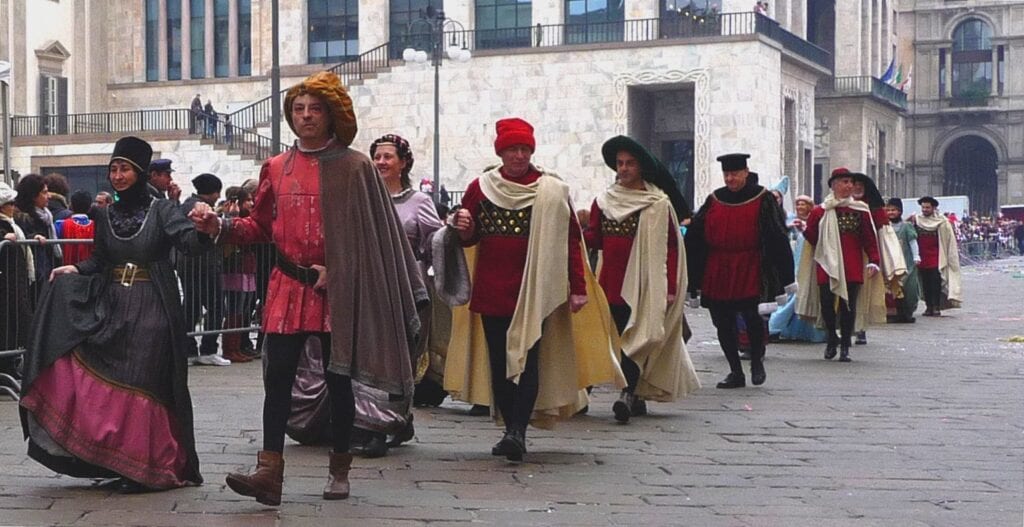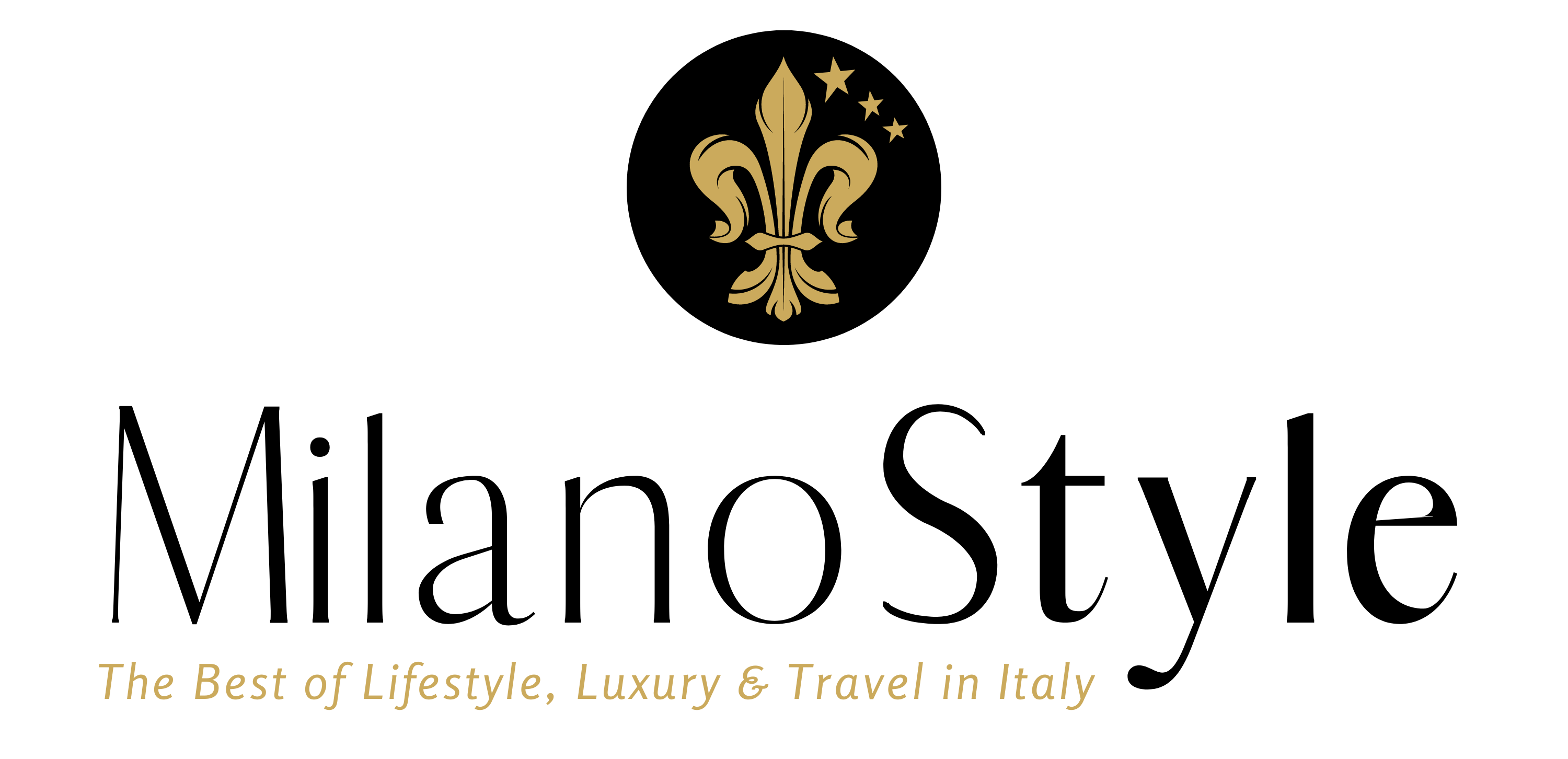Parties, parades and celebrations are held on the last day of the Carnival period.
Carnival in Milan
Il Carnevale di Milano is celebrated on the day before the beginning of Lent. Carnival in Milan follows the Ambrosian rite and is celebrated one week after Carnival in Venice which follows the Roman rite. (Venice Carnevale festival is celebrated one week before)
This site uses ads, ad intent links and promotions. Links like these help creators earn money. More info.
In 2022 , Shrove Thursday will be February 24th, and Shrove Tuesday will be March 1st.
Note: Due to Covid-19 restrictions many towns and cities in Italy have cancelled the traditional parades. However, many people and children will still be dressed up celebrating informally.
| M | T | W | TH | F | S | SU |
| FEB 24 | 25 | 26 | 27 | |||
| Shrove Thursday |
Carnival (Roman rite) |
|||||
| 28 | MAR 1 | 2 | 3 | 4 | 5 | 6 |
| |
Shrove Tuesday |
Ash Wednesday |
Carnival (Ambrosian rite) |


Gli Sbandieratori – flag corps marching in Milan Carnival Parade / Wikimedia
Parades & Events
Note: Due to COVID-19 restrictions parties and parades will not be held this year
In various locations throughout the city, there are usually events and activities for all, including families and children. Piazza Duomo and the surrounding areas are the main locations for festivities. Street performers, clowns parades and concerts all day and evening long. The main Milano parade with costumes, jugglers, pantomimes and floats will start from I Giardini Publici, Palestro, Piazza San Babila, Corso Europa, Piazza Fontana ending in Piazza Cesare Beccaria (near Piazza Duomo) .

Milan Clubs, Parties & Dinners in Masquerade
Note: Due to COVID-19 restrictions parties and parades will not be held this year
Where to stay
All the action is at Piazza Duomo but other areas like Brera and Castello are within walking distance.
Traditional Carnival Masks and Costumes

 Traditional costumes at the Milan carnival Parade / Wikimedia
Traditional costumes at the Milan carnival Parade / Wikimedia
Menghino and his wife La Cecca, characters invented by burlesque comedy play-write Carlo Maria Maggi. Meneghino was the term used for sixteenth-century Milanese butlers who accompanied noblemen and women in their carriages. They became symbols of the honest, hard-working, joyful Milanese.

Meneghino (pronounced men-eh-GHEE-no)
What is Carnival?
It’s the last day of celebrations before the forty-day period of Lent (a period of penitence and fasting) before Easter. Carne means meat, vale means farewell, goodbye in Latin, hence Carnevale means farewell to meat before 40 days of Lent. Carnevale was the last day to eat meat and other rich delicacies before abstaining for Lent. Wearing masks and costumes was a way to hide one’s identity, social class, and inhibitions on this day of frolicking festivities.
What to eat at Carnival
Chiacchiere
A light pastry fried and sprinkled with powdered sugar or glazed with chocolate. You can find them in any and every bakery or pastry shop at Carnival time.

Chiacchiere (pronounced KIA-kia-rey) – Chiacchiere means “gossip”.
Bugie di Carnevale

Bugie di Carnevale – Bugie means “lies” . These are fluffy, fried pastry filled with pastry cream and sprinkled with sugar.
What to say
There is no formal expression for Carnival, people say “Buon Carnevale” Happy Carnival or simply “Auguri“, Best Wishes. The main thing is to have a bit of fun- “Divertiti!”

Discover more from MilanoStyle.com
Subscribe to get the latest posts to your email.
 Ciao, I’m Celia, your travel advisor in Italy! Need a personal shopper in Milan or want help planning your trip to Italy? Learn about what to do and see, and where to eat and sleep. Ask me a question or request a custom travel plan. Book a consultation. Ciao, I’m Celia, your travel advisor in Italy! Need a personal shopper in Milan or want help planning your trip to Italy? Learn about what to do and see, and where to eat and sleep. Ask me a question or request a custom travel plan. Book a consultation. |




